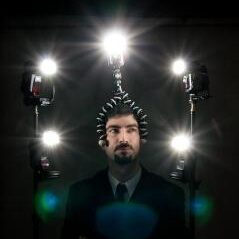Bravely Face the Sun: How To Shoot With the Sun in the Frame
Many photographers are afraid to shoot facing the sun, for fear of either damaging their camera or producing ugly photos. But if all goes well, you can get remarkable backlit photos.

I’ve been a freelancer since early 2012; photography is my living. I acquired my photography experience, both inside and outside the studio, during the previous years—when I was working all day and taking pictures every evening and weekend. I don’t have just one clearly defined topic; I like photographing people, but also cityscapes and landscapes.
Many photographers are afraid to shoot facing the sun, for fear of either damaging their camera or producing ugly photos. But if all goes well, you can get remarkable backlit photos.
You don’t have to stick to just wide-angle lenses for your photo safaris. There are many ways get impressive pictures out of a telephoto lens. Even when you’re photographing landscapes.
Fog is a dear friend for every photographer, since it transforms daily sceneries into grand spectacles. Its appearance should evoke an impulse to grab your camera and head out to take pictures. The following tips should help you to utilize your fog photography skills to the max.
In product photography, you’ll often have to use a different background for a shoot than you’ll use for the final picture. Either the “real” picture would be complicated to take, or you don’t even know what the background will be. The solution is to crop the product, erase the background, and add a new one in its place. Just these few steps can give you your dream product photos.
Taking pictures against the light doesn’t have to mean ruined photos. Not at all. It can give you some very impressive portraits. And all you need here to keep from ending up with an unusable picture is a little skill. Take a look at the right way to shoot a portrait against the light.
In winter, and sometimes at the end of fall as well, weather conditions appear that can really spice up nature. While bare tree branches are boring, when the glaze arrives the scene suddenly changes, and a photographer can head out for a rich frosty safari.
Lens names are full of abbreviations, number ranges, and useless advertising. Take a look at which pieces of information are important for you and what it all means.
The phrase “crop factor” (also called “focal length multiplier” or “focal length magnification”) defines a sensor’s size relative to a frame of analog film. But do you know how it influences the way that photos from phones, compacts, and APS-C DSLR cameras look compared to photos from a full-frame camera? There are big differences in the focal length, lens speed, and sharpness.
Not everything works out every time, and as a photographer you can sometimes run into problems. But some problems can be avoided if you’re prepared for the pitfalls of holiday photography. That goes for Christmas too.
When you sit down with lenses that all offer the same focal length and aperture, you might think that they’ll all give almost the same outputs. But in reality their outputs vary in a variety of details. To see this difference “live,” check out our test of some Canon and Sigma lenses that—in theory—“meet” at the 35mm focal length.
Subscribe to receive the best learn.zoner.com has to offer
By confirming the subscription, you consent to the processing of your personal data for receiving newsletter. Learn more in our privacy policy.